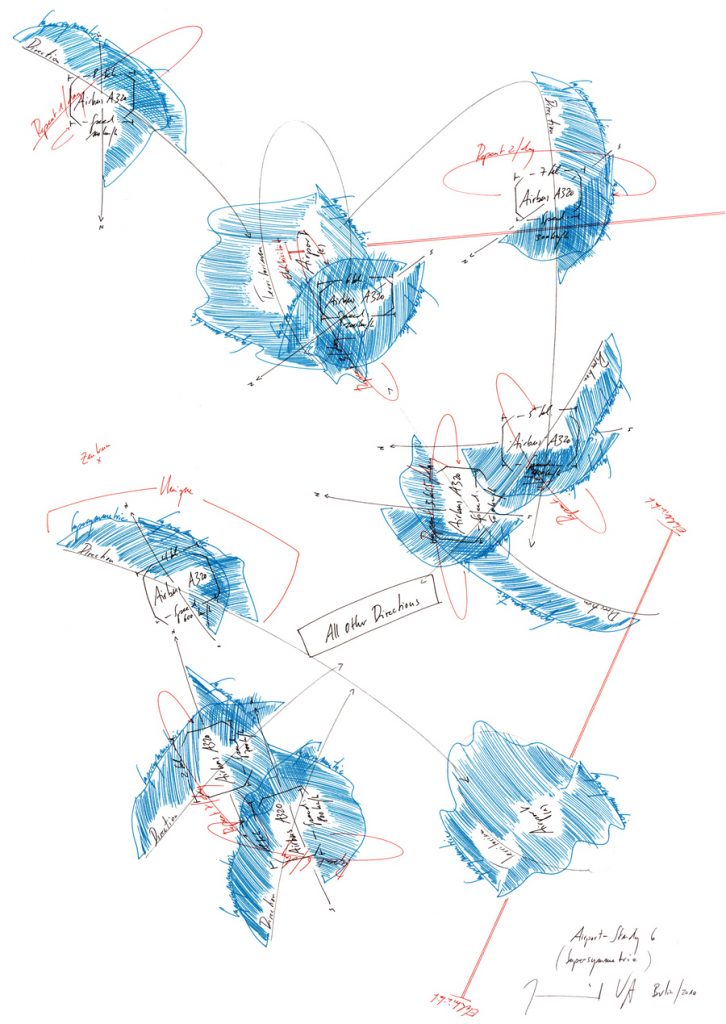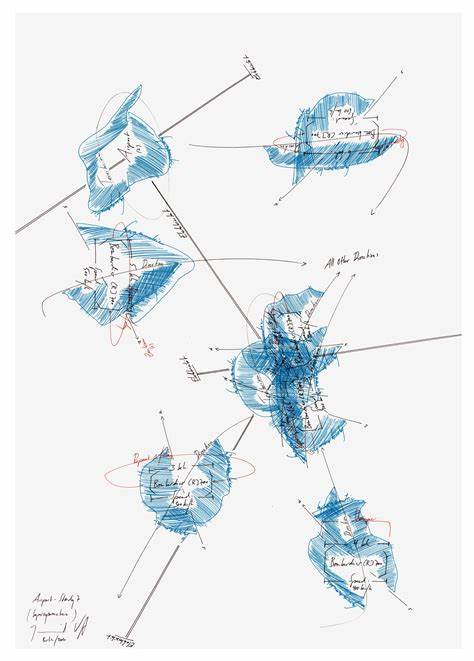From Vitamin D2 by Martin Herbert:
Superimpose the known facts about Joined Voigt’s circuitous route to art-making onto her breathtakingly elaborate drawings – which recall wavelength diagrams, chalcedonic cross-sections, oceanography charts, cardiographs, musical scores and gossamer-fine abstractions – and her aesthetic can seem almost inevitable. Trained as a cellist until she was eighteen, developing the reserves of focus on which she says her art now rests, Voigt at first redirected her studies towards philosophy and literature, where she found that substituting proliferating diagrams for sentences helped her to understand abstruse concepts. Later, switching universities and finding herself in the middle of a student strike, she elected to enter art school: here, after some frustration with photography’s limited ability to represent experience, she returned to elaborate note-taking, writing down the reasons why she would have taken a photograph instead of taking it, and classifying the given situation in order to understand its structure. Applying her notational style to perceptual experience, and – working on the floor, to loud techno music – she has since constructed the already substantial, telegraphic yet sensual and, until recently, primarily black-and-white portfolio of large-scale drawings for which she’s known.
These works, arising out of a rule-driven, algorithm-utilizing methodology that nevertheless allows room for spontaneity (since Voigt is unable to control the situations it places her in), aim to memorialize, to capture, the underlying mechanics of a given experience. Airport Study 6: Supersymmetrie (2010), with its scribbled notes about the speed and direction of Airbuses, examines how planes take off from an airport, while the rigorously gridded Africa Series (2009) records impressions of Africa. How the horizon line rebalances in a mobile spectator’s sightline is the subject of the Horizont series (2010-11), and Views on Chinese Erotic Art, from 16th to 20th Century (2011), where determined loops and arcs bend around near-abstract blue outlines, is self-explanatory. But Voigt does not seem to intend her drawings to be wholly decoded. If she did, she’d write her elegant German notations in a more intelligible way: like Cy Twombly’s texts, her are as much visual as verbal. Her artworks are mind maps, evocations of the silent multi-tasking that processes inside someone’s head as they interpret the constantly shifting sensory world before them, or try to grasp the ungraspable quicksilver texture of reality.
10 Territorien / Konvex-Konkav / Richtungswechsel (10 Territories / Convex-Concave / Change of Direction, 2010), with its teeming shoals of tiny arrows, purports to record the complex and changeable directional flow of wind or water over a pair of curved surfaces, while in Extract Words and Views: Fragments d’un discours amoureux (2012) Voigt anatomizes quotidian forms – a chaise-longue, trousers, an envelope, a galloping horse, hands, flowers, circles, as well as some unrecognizable forms – and addends them with textual chatter and compulsive loops, suggesting a lovelorn mind in which the everyday is transfigured. If love cannot be reduced to language, if words are never quite commensurate with emotion – despite heroic attempts such as Roland Barthes’ fragmented devotional, A Lover’s Discourse (1978), which Voigt’s title half-references – then this is in some ways an ideal subject for the artist. She takes phenomena that refuse to be fully trapped on paper, and creates vertiginous evocations of the chase: a partial, but still overwhelming, informational sublime.



Leave a Reply